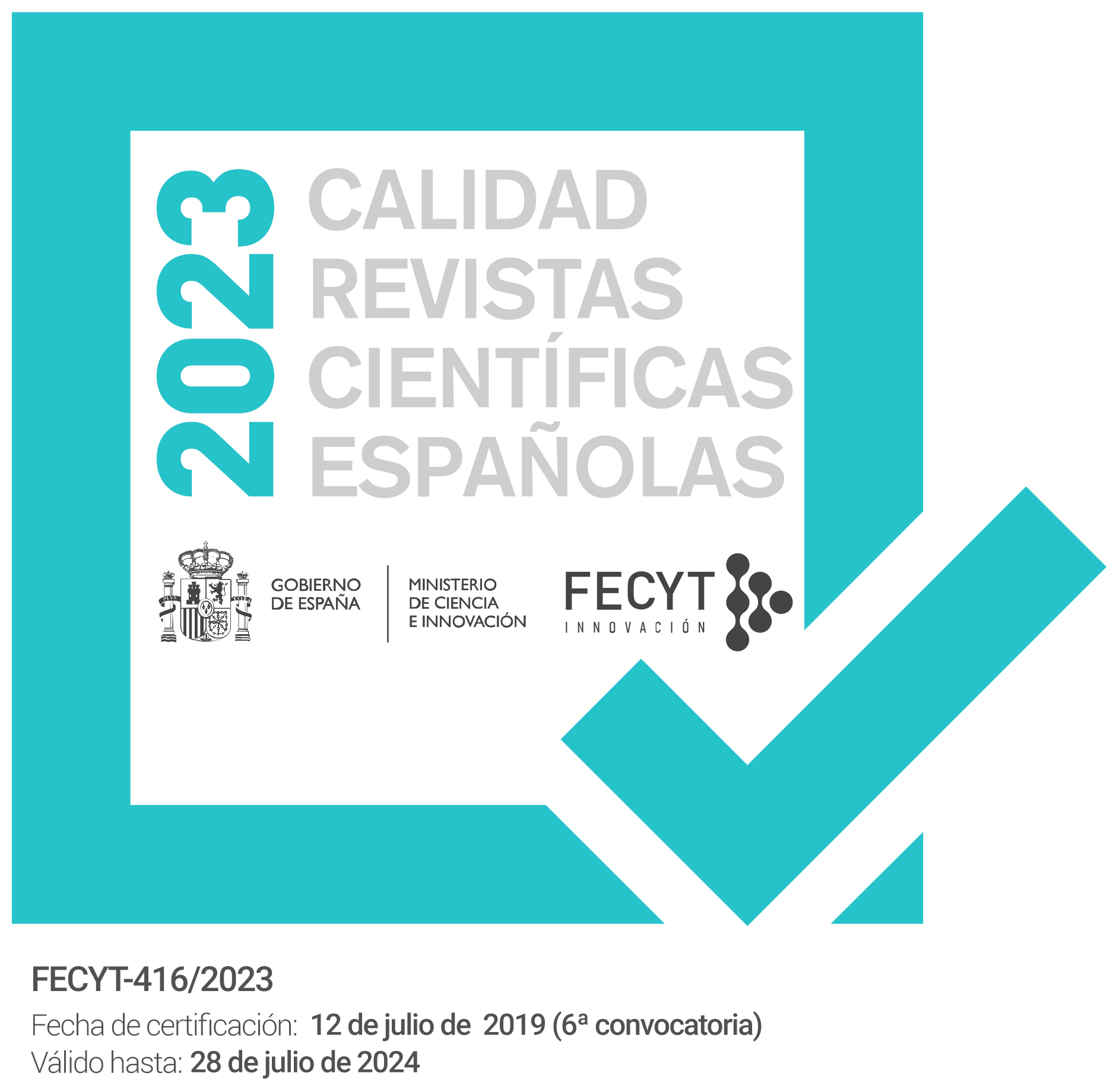El Tarajal Sugar Factory (Malaga), Work of the Architect Manuel Rivera Vera
DOI:
https://doi.org/10.51349/veg.2022.1.14Keywords:
Malaga, Industrial Architecture, Sugar Factory, Rivera VeraAbstract
After the petering out of the splendid industrial boom in Malaga at the end of the 19th century, the city experienced a partial recovery during the first third of the 20th century. Among the newly-created industrial enterprises were the sugar factories adapted to the processing of both cane and beet. One of them was El Tarajal, promoted by prominent members of the city’s business and political oligarchy. The building is the most monumental and best preserved in the city, whose creation has now been accredited to the architect Manuel Rivera Vera.
Downloads
References
Alfaro Gutiérrez, P. (1921): Crónica del viaje de S.M. el Rey D. Alfonso XII a Málaga los días 21 y 22 de mayo de 1921, Imprenta Ibérica
Brotons Pazos, J. (1999): El Embalse del Chorro, un hito en la política hidráulica en el umbral del siglo XX, Confederación Hidrográfica del Sur, Málaga.
Camarero, C.; Campos, J. (dirs.) (1993): Obras hidráulicas en la América Colonial, CEHOPU, Madrid.
Cambrón Infante, A. (1999): La industria azucarera andaluza: la amarga experiencia de Ramón de la Sagra, en De la Sagra, Ramón (1845), Informe sobre el cultivo de la caña y la fabricación de azúcar en las costas de Andalucía, edición facsímil, Asukaría Mediterránea, Granada.
Estatutos de la Sociedad Anónima «Azucarera Malagueña El Tarajal» (1930), Tipografía La Moderna, Málaga.
Fiestas, J. Mª. (s/f): La caña de azúcar. La última azucarera de Europa. Salobreña. Granada, Fuente Aporta Ediciones.
García Montoro, C.; Parejo Barranco, J.A. (1986): Historia de la Cámara Oficial de Comercio, Industria y Navegación de Málaga (1886-1986), COCINM, Málaga.
Guzmán Valdivia, A. (2019): La industria del azúcar en la provincia de Málaga, en A. Guzmán y A. Santiago (coord.) (2019), Málaga. Pasado y presente de una ciudad industrial, Málaga Tech Park y APIDMA, Málaga: 89-110.
Heredia García, G.; Lorente Fernández, V. (2003): Las fábricas y la ciudad (Málaga, 1834-1930), Arguval, Málaga.
Lara García, Mª.P. (1988): Historia de los cines malagueños (desde sus orígenes hasta 1946), Diputación Provincial de Málaga
López Luengo, J. (2004): Arsenio Rueda Marín. Regenerador de la caña azucarera I, II y III, El Faro nº. 3829, 3830 y 3831, Motril.
López Núñez, O. (1999): Imágenes de Cuba colonial, en Grabados Coloniales Cubanos, catálogo de exposición, Diputación Provincial de Málaga, Málaga: 6-17.
Luque de Diego, R. (2016): La Corchera. Cooperativa de trabajadores en la fábrica del Tarajal, Proyecto Fin de Carrera, Escuela Superior de Arquitectura de Málaga.
Navascués Palacio, P. (1973): Arquitectura y arquitectos madrileños del siglo xix, CSIC, Madrid.
Navascués Palacio, P.; Quesada Martín, Mª. J. (1992): El siglo xix. Bajo el signo del Romanticismo, Sílex, Madrid.
Pérez Ortiz, Mª.J. (2017): Hinojosa: un poeta del 27 en el umbral del olvido, La Opinión de Málaga, 4 de noviembre de 2017.
Pezzi Cristóbal, P. (eds.) (2019): El azúcar en la provincia de Málaga, Sociedad de Amigos de la Cultura de Vélez-Málaga, Málaga.
Piñar Samos, J. y Giménez Yanguas, M. (1998), Las fábricas azucareras de la costa granadina, en VV.AA., El patrimonio tecnológico de Andalucía, Consejería de Educación y Ciencia, Junta de Andalucía, Sevilla: 167-204.
Piñar Samos, J.; Giménez Yanguas, M. (1999), Introducción a edición facsímil de Compagnie de Fives-Lille pour Construction Mécaniques et Enterprises. Matériel de Sucrerie (1880), Asukaría Mediterranea, Granada: 11-41.
Rodríguez López, J. et al. (2000): Granada. Memoria de un cambio de siglo, Fundación Caja de Granada, Granada.
Rodríguez Marín, F.J. (1992-1993): Manuel Rivera Vera (1879-1940). Último eslabón de dos generaciones de arquitectos (II), Boletín de Arte, 13: 235-255.
Rodríguez Marín, F.J. (2003): Málaga 1850-1920. La arquitectura industrial como exponente de una actividad económica, III Congreso de Historia de Andalucía, Universidad de Córdoba: 233-254.
Rodríguez Marín, F.J. (2009): Memoria de un pasado reciente: las fábricas de azúcar de Málaga (España), II Encuentro Internacional Patrimonio Industrial Agroalimentario, TICCHI, Córdoba (Argentina), Editora Literaria, Córdoba.
Rodríguez Marín, F.J. (2012): La experimentación agrícola como apoyo de la actividad industrial: las estaciones de agricultura de Motril, Torrox y Churriana, I Jornadas Andaluzas del Patrimonio Industrial y la Obra Pública, Fundación Patrimonio Industrial de Andalucía, Sevilla.
Santiago Ramos, A.; Bonilla Estébanez, Isabel y Guzmán Valdivia, A. (2001), Cien años de historia de las fábricas malagueñas (1830-1930), Acento Andaluz, Málaga.
Santiago Ramos, A.; Bonilla Estébanez, I.; Guzmán Valdivia, A. (2005): La caña de azúcar, un referente cultural en la Axarquía, Ballix, 2: 67-88.
Sarriá Fernández, C. (2014): Propuesta para la creación y ubicación del museo de la industria de Málaga, Isla de Arriarán, 37: 7-44.
Downloads
Published
Issue
Section
License
Copyright (c) 2022 Francisco José Rodríguez Marín

This work is licensed under a Creative Commons Attribution-NonCommercial-NoDerivatives 4.0 International License.
The articles are open access distributed under the terms of the Creative Commons Attribution-NonCommercial-NoDerivatives (CC BY-NC-ND) Spain 4.0 license. Authors who publish in this journal agree with the following terms:
a) Authors retain the copyright and guarantee the journal the right to be the first publication of the work as well as licensed under a Creative Commons Attribution License that allows others to share the work with a recognition of the authorship of the work and the Initial publication in this magazine.
b) Authors may separately establish additional agreements for the non-exclusive distribution of the version of the work published in the journal (for example, place it in an institutional repository or publish it in a book), with recognition of its initial publication in this magazine.
c) Authors are allowed and encouraged to disseminate their work electronically (for example, in institutional repositories or on their own website) before and during the submission process, as it may result in productive exchanges, as well as a earliest and largest citation of published works (See The Effect of Open Access).



